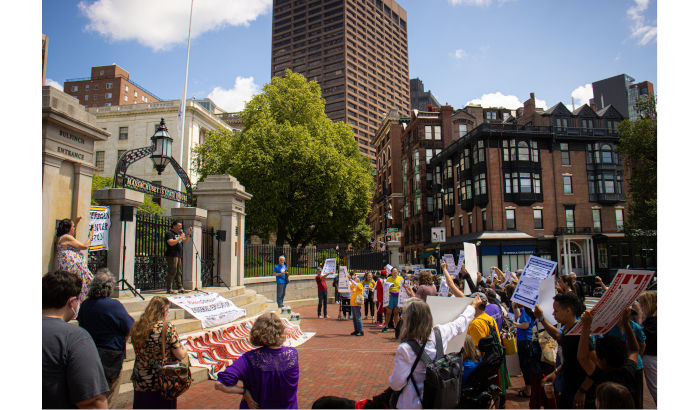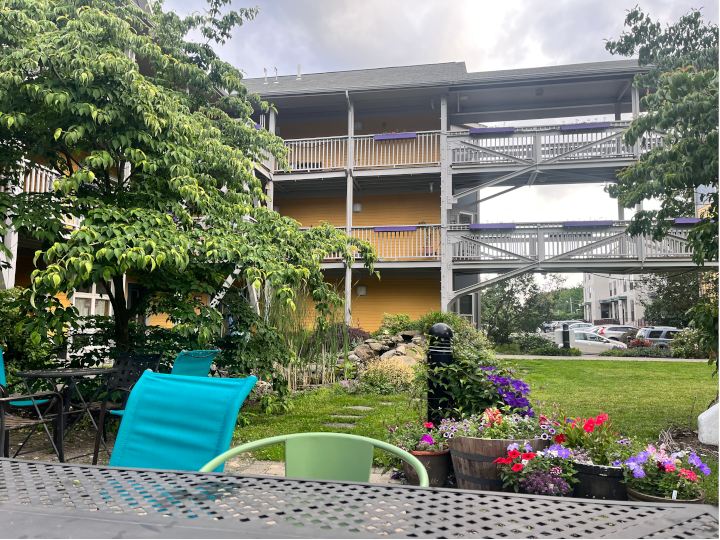Despite businesses producing the majority of the city’s waste, efforts to reduce it have been largely focused on residential programs
Boston’s Zero Waste Initiative is now in its sixth year of a 16-year plan aimed at reaching an 80% recycling rate by 2035, yet, according to the city’s Director of Environmental Quality Alice Brown, its recycling rate has decreased from 25% in 2019 to 19% today. Even more concerning, since the initiative’s launch, the city has introduced a series of programs designed to manage residential waste, however, commercial and residential sources—which account for the vast majority of the city’s waste—remain largely unaddressed.
The Commercial Waste Gap
According to a 2019 Waste Technical Report from Boston University, commercial and institutional sources generate roughly 78 to 80% of all waste in Boston, while residential waste accounts for only about 20%.
Some progress has been made towards addressing commercial waste, in 2020 Public Works expanded the scope of commercial hauler permits to include all types of waste hauling vehicles with the intent to improve data collection on waste management practices across the city.
Still, despite commercial sources producing the majority of the city’s waste, Boston’s efforts toward Zero Waste have been largely focused on residential programs, including free curbside composting and drop-off sites.
One of the initiative’s long-term goals was to require haulers to collect food and food-soiled paper from commercial customers for composting. Massachusetts law does prohibit businesses generating more than half ton of food waste per week from disposing of organics in landfills or incinerators. However, this law places responsibility on the generator, not the hauler. Boston has yet to implement any local policies that would mandate that haulers provide collection or report services for compostable materials. While voluntary programs like RecyclingWorks Massachusetts offer guidance and technical support, the city does not have regulations that require haulers to participate or ensure compliance.
Another gap involves oversight of the workforce handling waste. Cole Rosengren, managing editor of WasteDive, who has reported extensively on the Zero Waste Initiative, said, “There are city staff who will pick up the public waste baskets, but beyond that it’s mostly all contracted out, so the city can try to enforce certain safety requirements through contracts, but a lot of the work being done is not being done by city workers.” Boston also lacks standardized reporting and accountability in place when it comes to commercial waste diversion, without this kind of monitoring and enforcement, data collection alone cannot completely ensure that businesses comply with existing state organics laws.
What is Zero Waste Boston
In 2019, former Mayor Marty Walsh announced Boston’s first Zero Waste Initiative, designed with the goal of increasing the city’s waste diversion rate to 80% by 2035 and achieving carbon neutrality by 2050.
Following the 2016 Zero Waste Summit, the Zero Waste advisory committee was launched in 2018, with the task of creating 30 recommendations for near and long-term action to “reduce the consumption of natural resources and emission of greenhouse gases” and “increase our city wide recycling rate to be on par with leading cities across the country,” as detailed in a 2019 letter from the committee co-chairs to Walsh.
The committee’s near-term goals, which they planned to achieve between 2019 and 2024, according to their initial timeline, focused on three major categories: Reduce and Reuse, Recycle More and Recycle Right, and Inspire Innovation. The recommendations within these categories emphasized a mix of infrastructure investments, policy, and public education. When the initiative was first announced, Boston diverted about 25% of its waste for recycling or composting, a 10% increase from 2009, when Boston moved to single-stream recycling.
Delays and Adjustments During the Pandemic
The Zero Waste Initiative was just shy of a year old when the COVID-19 outbreak began, which drove changes in waste patterns as commercial buildings emptied and households with remote students and workers generated more trash. By October 2020, Boston reported a 6.6% increase in residential waste, adding approximately 18 million more pounds of trash and 8 million more pounds of recycling. “Operationally, COVID-19 caused a significant shift in waste generation from commercial buildings to residential households, placing an unexpected strain on the City’s waste services,” Christopher Coakley, information officer for the Department of Public Works, said, “this led to delayed collections and drop-offs at disposal sites, and extended working hours for both municipal sanitation staff and private waste contractors.” Brown added, “Though some patterns have begun to shift back, waste patterns are still different from what they were in 2019.”
In addition to shifting waste patterns, the COVID-19 pandemic caused some aspects of Boston’s Zero Waste Initiative to stall. One of the near-term goals of the initiative was to reduce problem products and packaging, however, in March 2020, statewide enforcement of in-store bottle and can redemptions were suspended, causing rates to fall from 50% in 2019 to 38% by 2021. According to the latest data from 2024, the bottle return rate still has not recovered, and has even dropped to 35%.
Rosengren recalled the challenges that presented during this time, “The city obviously was focused on responding to the pandemic and had less bandwidth to launch new programs, so funding became a challenge […] COVID certainly set people back.”
What’s Been Working
In 2022, Boston launched a free curbside food waste collection pilot program for buildings with six units or fewer, which has grown from 10,000 households to 30,000 as of April 2023, diverting more than 5,400 tons of food waste, according to Coakley.
Rosengren said that when it comes to measuring the success of Zero Waste and overall changes in how the city handles waste “the biggest outcome is the launch of the Curbside Organics program.” He continued, “It’s not available to all residents yet, but it’s grown quite a bit and that is definitely a clear, measurable thing that you can point to.” Likewise, the textile recycling program, launched in 2022, has diverted over 304 tons of material, nearly all of which were reused or repurposed.
In addition to these programs, Boston hosts four-large scale Zero Waste Drop-Off events annually, beginning in 2018. According to Coakley, the events “draw over 700 residents per event to responsibly dispose of hard-to-recycle items like-waste, car parts, and more.”
The city also conducts public education campaigns along with waste reduction outreach and technical assistance. According to Brown, “City staff attends Mayor [Wu’s] Neighborhood Coffee Hours, responds to resident inquiries, and works with Boston Public Schools to empower students as waste literacy ambassadors in their homes.” The city also has advertisements on MBTA trains and digital live boards at MBTA stations promoting Boston’s Curbside Food Waste Collection and Textile Recovery programs. “Outdoor advertising has been one of the most effective strategies in growing our waste reduction programs,” said Brown.
When asked if the 80% by 2035 goal has shifted for the initiative, Coakley said, “Boston’s Zero Waste Initiative is progressing across all four of its core goals outlined in the Zero Waste Boston Plan.”
At the one-third mark of Boston’s Zero Waste Initiative, programs like curbside organics and textile recycling have demonstrated progress in residential waste management. However, gaps remain, commercial waste diversion is still underregulated, workforce oversight depends heavily on contract enforcement, and standardized reporting is limited.
Coakley, said, “We are committed to continuously improving our programs and expanding services to meet the city’s waste diversion goals.” These next ten years will determine how effectively Boston can address these gaps and move toward its 2035 goal.
This article was produced for HorizonMass, the independent, student-driven, news outlet of the Boston Institute for Nonprofit Journalism and is syndicated by BINJ’s MassWire news service.






